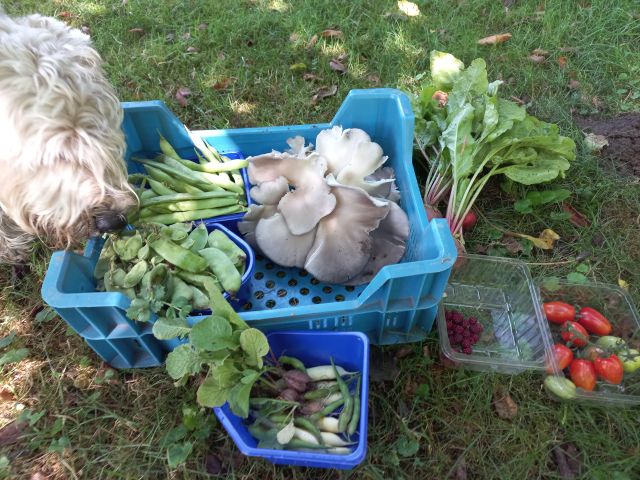And now it is time for a personal viewpoint. Not because there isn’t anything else to write about but because I see too many people being misled by their ideas of the current food forest movement. I would like nothing else than to see more people eating their own homegrown or locally grown products and in this Blog I will try to give a more practical view of harvesting products from a food forest in the hope that future food foresters can realign their plans with their (adjusted) expectations.
Food forests are currently a hot item here in the Netherlands. The combination of the claims “More food, more trees, less work” is often used to motivate people to participate in the food forest race. And it is working. What started as a bottom-up action by ground-level folk was at first grudgingly accepted and later embraced by policymakers. Everybody is planting edible trees and shrubs. Everybody is following courses and/or checking internet. Everybody is happy with themselves. The corresponding positive vibe is infectious and seems to create a warm fuzzy feeling amongst likeminded individuals. Welcoming but potentially empty.
Landowners of future food forests have often spent a lot of time and money in choosing many different sorts of edible plants, often more than one hundred different (sub)species. These plants are usually from far away countries and are therefore often unfamiliar to the budding food forester. Each plant has its own properties and growing requirements and although information can be gathered from external sources, the actual experience working with the plant usually takes getting used to. And the time needed is very short. Multiply this by the large number of different species and disappointment could be just around the corner.
Edible plants do not take into account swimming lessons for the children, holiday plans, illness or working hours – they are ripe when they are ripe. And the happy harvester must act accordingly. Being too late means no result and no food. Some plants can be harvested at the same time but this still means frequent visits to the food forest. A few lucky food forest owners can walk to their own forest but most people will have to cycle or drive, walk a while into the forest with their harvesting gear and then carry their (heavy?) treasure back home again.
Harvesting is often seen as the peak of the growth process and a joyous moment but this can fade when harvesting turns into drudgery. One hour of picking can be euphoric, two hours of picking can feel a little like work and this feeling can turn more sour when a couple of hours once a week turns into multiple sessions per week. Working with a group of people can speed up the process and can be quite pleasurable but finding volunteers, friends or family at the right time may be a challenge.
Getting the precious cargo to the kitchen or storage place is also another factor that is often forgotten when creating a food forest. Many products should preferably be picked when dry and also transported without getting wet. Also, most plant products have a unique set of requirements for treatment and storage. Having the right material to work with and organizing storage space beforehand can prevent stress.
A healthy (food) forest is a dynamic ecosystem with the emphasis on dynamic. After a few years once skinny trees create shade and compete for space, shrubs grow or disappear, herbs move from place to place. This does not have to be a problem but some physical management will be needed to optimize selected edible species. As a plant grows older it gets bigger and/or taller and hopefully produces more edible and accessible food. A growing harvest results in more picking hours, sturdier equipment and more time needed to process the products.
Tips for managing the harvest from a small-scale food forest
* When designing a food forest consider how many picking hours are needed and available once the forest is at production age
* Reduce the number of edible plants to a manageable selection based on season, processing methods and personal choice
* Try to get some hands-on experience with edible plants (in a food forest) before they are ready to pick
* Organize a large harvesting group beforehand consisting of young and older people
* Go work in a vegetable and / or kitchen garden and if you can’t handle this for whatever reason, replace your food forest ideas / plans with something else that fits into your lifestyle.
